Russian miner Polyus turns tech into gold
Simply sign up to the European companies myFT Digest -- delivered directly to your inbox.
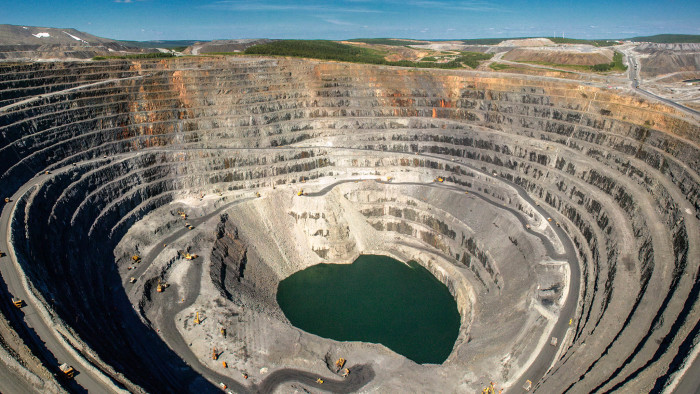
The sheets of rock start to slide into the pit, 300m deep, before the thunderous sound of the dynamite has even reached the gold mine’s rim. It escapes and reverberates around the Siberian hills.
At first glance, the Olimpiada gold mine deep in central Russia looks much like any other pit. But technological innovations deployed at the site by Polyus, the mine’s owner and the country’s largest gold producer, have put it at the forefront of a revolution picking up speed in Russian industry.
Remote-controlled machines using high-precision drills placed the 92 tonnes of explosives which turned 112,000 cubic metres of solid rock into rubble. In the near future, self-driving trucks will cart the ore to the nearby processing centre. And computer-controlled vats calculate the levels of chemicals and bacteria needed to purify the crushed rock into gleaming gold bars.
All this helps the site to produce around 100kg of gold every day — an increase in production of 36 per cent over the past year. This has helped to push up profit so far in 2017 by 10 per cent year-on-year.
“We see through automation and various IT solutions that there is big room for improvement,” says Pavel Grachev, Polyus’ chief executive, in his Moscow office, 2,000 miles west of Olimpiada.
But Polyus’ innovation embraces more than heavy machinery: employees are offered financial rewards for proposing ideas to disrupt processes and increase efficiency. “It is not just about investing in equipment and technology, but in people that are able to revamp and optimise processes . . . It’s a mentality . . . From now on this has to be part of the company culture.”
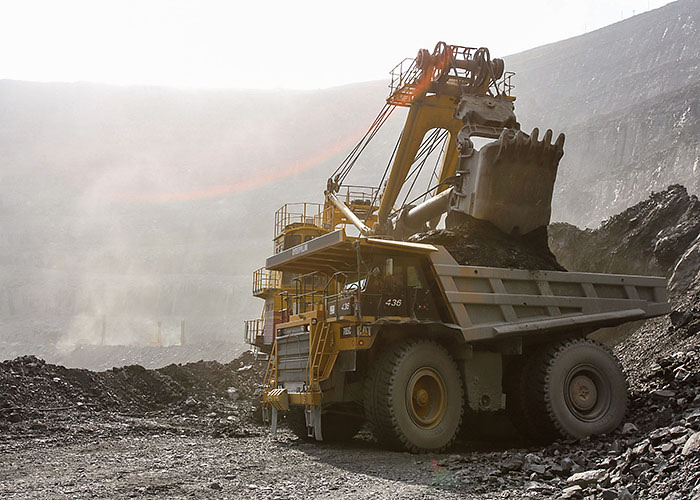
Deep in the Russian hinterland and accessible only by unpaved roads, Olimpiada is one of Russia’s largest gold mines, with proven reserves of at least 30m ounces of gold, equivalent to around $40bn at current prices. Polyus has targeted the site as the proving ground for some of its deepest technological advances. A glass-walled control room perched over the main pit — deep enough to bury the Eiffel Tower in — is filled with computers to control the machines working below, which could soon mean no human beings will be needed to descend its grey, rubble-strewn slopes.
“Operations that used to involve manual labour are now done with machines,” says Evgeniy Kochupovsky, the mine’s automation chief. Drilling equipment is now precise to 30cm, from 3m-4m previously. “Today, one system unites 210 pieces of mining equipment fitted with sensors,” he says, as dust and debris from the last explosion drift past the window.
Polyus’ advances at Olimpiada since Mr Grachev’s appointment as chief executive four years ago have come amid rapid technological change in Russia’s vast mining, metals and industrial sectors, which employ just 3 industrial robots for every 100,000 workers, compared to the global average of 69, according to the International Federation of Robotics.
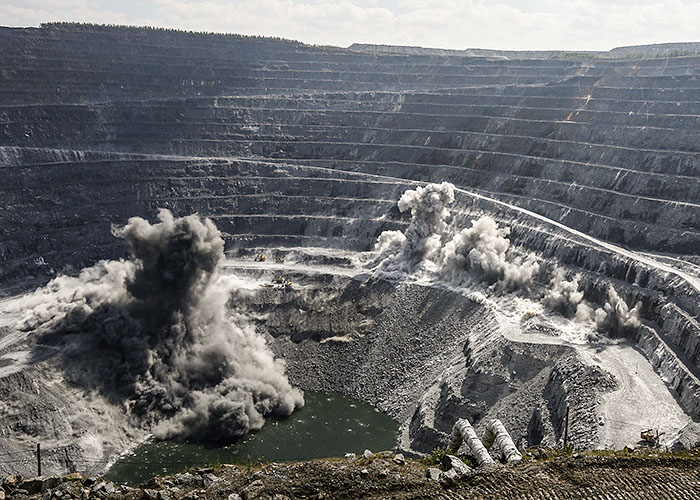
Many Russian companies are seeking to use digital tools and automation to drag Soviet-era machinery and processes into the 21st century, spurred by rising competition from other producers such as China and western nations and by higher quality demands from global customers.
“I don’t think they have had the pressure in the past that they have now, but I think they have probably always realised there was something they ought to be doing on the technology,” says Jason Burkitt, head of mining at consultants PwC in London. “But now, when you have got such old technology, the decision to upgrade is easier . . . It is ripe for joining things up.”
All the country’s largest industrial companies, from aluminium producers to coal miners, use factories or mines that were state-owned until the fall of the USSR, meaning many still employ assets that date back 40 years or more. Some Russian factories still use machines built by companies that no longer exist, underlining the challenge to modern-day owners seeking to keep pace with the rest of the world.
“Commodities is a global market,” says Mr Grachev. “The efficiency culture has penetrated us.”
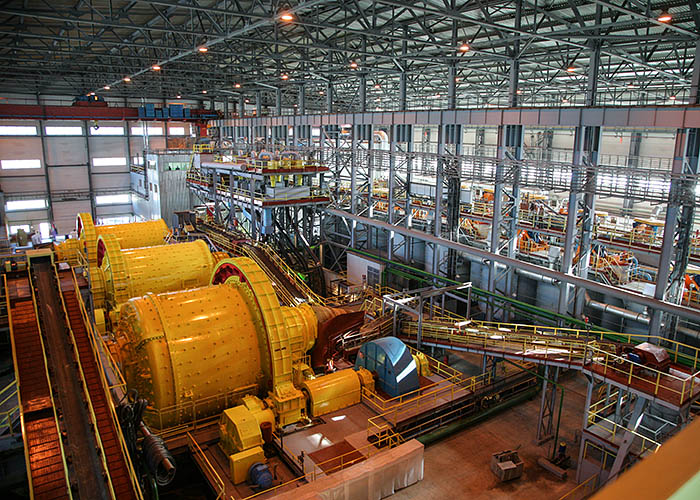
Inside the production plant at Olimpiada, a short drive from the pit, technology brought in under Mr Grachev’s leadership is even more obvious.
For half an hour, a series of vast rotating grinders, as large as buses, crush ore from car-tyre-sized lumps into dust; the ore then passes into flotation tanks. In these, a “smart eyes” system rolled out earlier this year uses high-precision cameras to measure the frequency, size and colour of the bubbles produced by the chemical and biological reactants working on the ore solution.
Those data are then processed by computers and are used to inform a system that controls the heat and amount of substances fed into the tanks to strip the rock solution of impurities and non-gold parts.
“The R&D journey here began 10 years ago with a bacterium, and now we’re getting 30, 50 per cent more productivity out of our assets,” says Roman Ashirov, head of Polyus’ research centre. A decade ago the centre developed a process using a special bacterium, instead of chemicals, to help purify the gold.
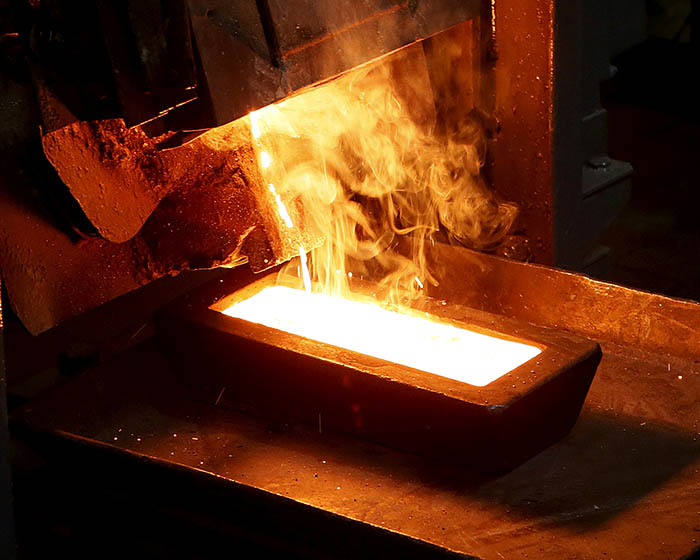
His team has produced 32 patents over the past decade, alongside 400 production process improvements that are deployed on-site. “This is our know-how, this is home-made technology,” he says.
More automation means fewer humans are needed, as Mr Grachev admits. The company is currently conducting a study to see which areas of the workforce will be most affected. But the company stresses that large-scale lay-offs are out of the question — remote-control trucks will still need operators, for example, but safely in the control room rather than at the bottom of the pit.
And while innovation is not cheap, it can help to give some miners such as Polyus an edge over rivals in the eyes of potential investors. “It is not going to be cheap to go to the new digitised, automated, connected industry,” adds Mr Burkitt. “But certainly some of the bigger miners think they can distinguish themselves from others. It’s not just about having the best ore bodies and the largest scale, it’s going to be about the best use of technology.”

Comments